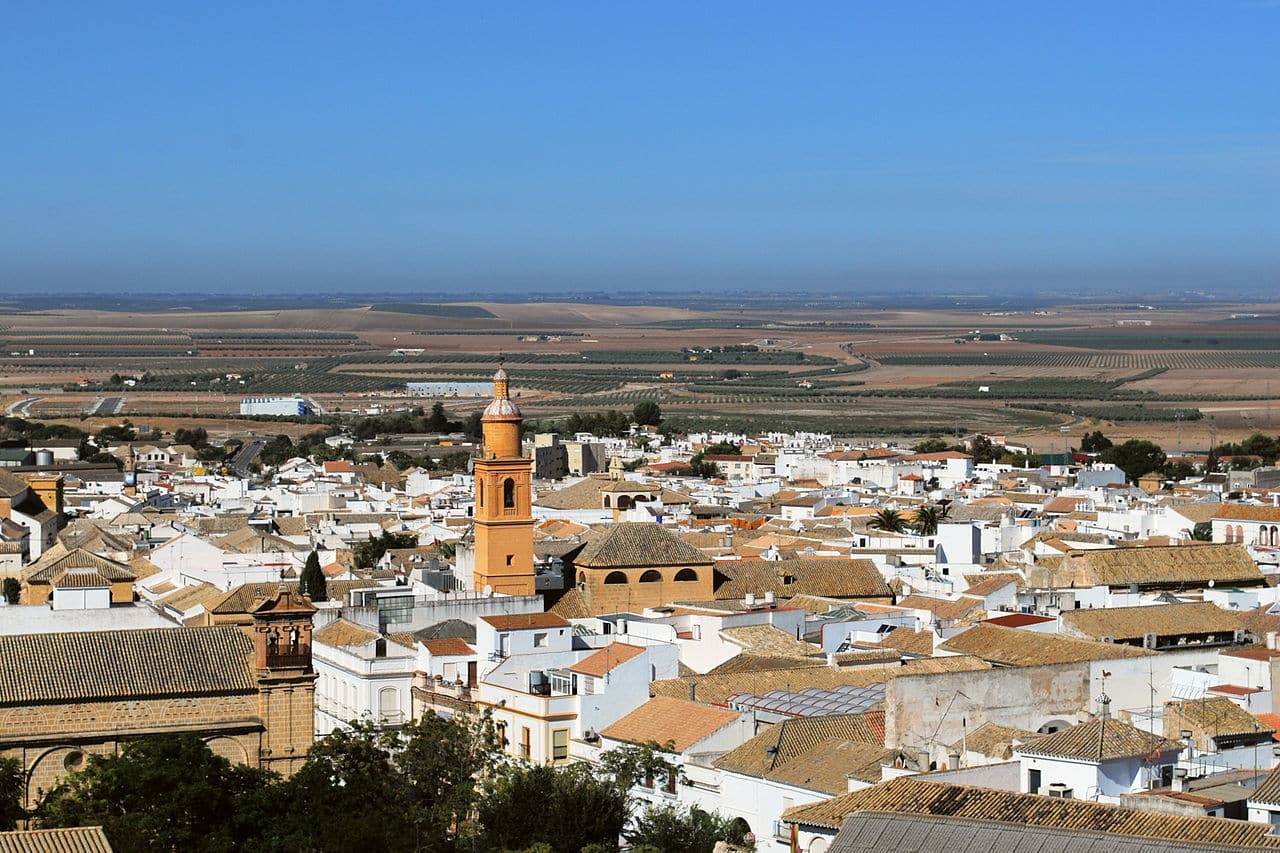
The beautiful villages of Seville are spread over the almost fifteen thousand square kilometers that this province of Andalusia. In fact, it is the largest in that autonomous community. And also one of the most populated, with almost two million inhabitants.
In these towns and their surroundings you will be able to see places as wonderful as those that make up the Sierra Norte Natural Park, archaeological remains such as the Romans of Italica and monuments as spectacular as, for example, the Cordoba Gate in Carmona. So that you can fully enjoy this Andalusian province, we are going to show you some of the beautiful towns in Seville.
Cazalla of the Sierra
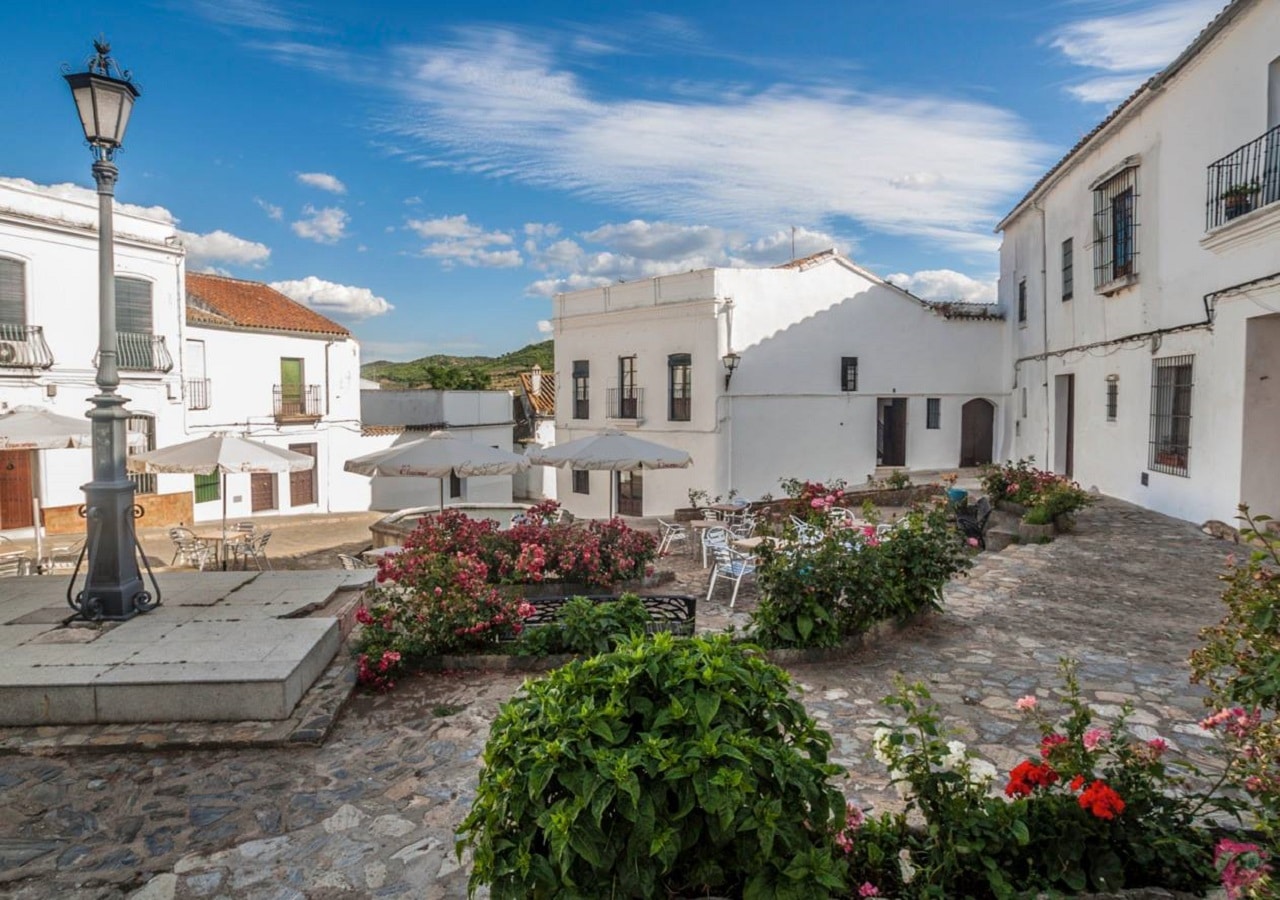
Square in Cazalla de la Sierra
Located precisely in the Sierra Norte Natural Park, this town of barely five thousand inhabitants is located about eighty kilometers north of the capital, near the province of Badajoz. This geographical location allows it to offer you different greenways and hiking trails such as the one that goes to the beautiful Huezar Waterfalls.
But, in addition, Cazalla has an important monumental heritage. Highlights in it the Church of Our Lady of Consolation, whose construction began in the fourteenth century, although it was not completed until the eighteenth. For this reason, it combines Mudejar elements with other Renaissance and Baroque elements. You will find it in the Plaza Mayor, the highest part of the town and will surprise you with its large dimensions. Also, attached to it you can see a door of the old Almohad wall.
We also advise you to visit the Charterhouse, which is about five kilometers from the town, and the San Francisco and Madre de Dios convents, the latter with a beautiful Renaissance cloister. For its part, the old convent of San Agustín is today the Town hall and Santa Clara monastery a secondary school. The church and palace of San Benito, in the Mudejar Gothic style, have been converted into a hotel and the Hermitage of Our Lady of Mount houses the image of the patron saint of Cazalla.
Carmona, spectacular among the beautiful villages of Seville
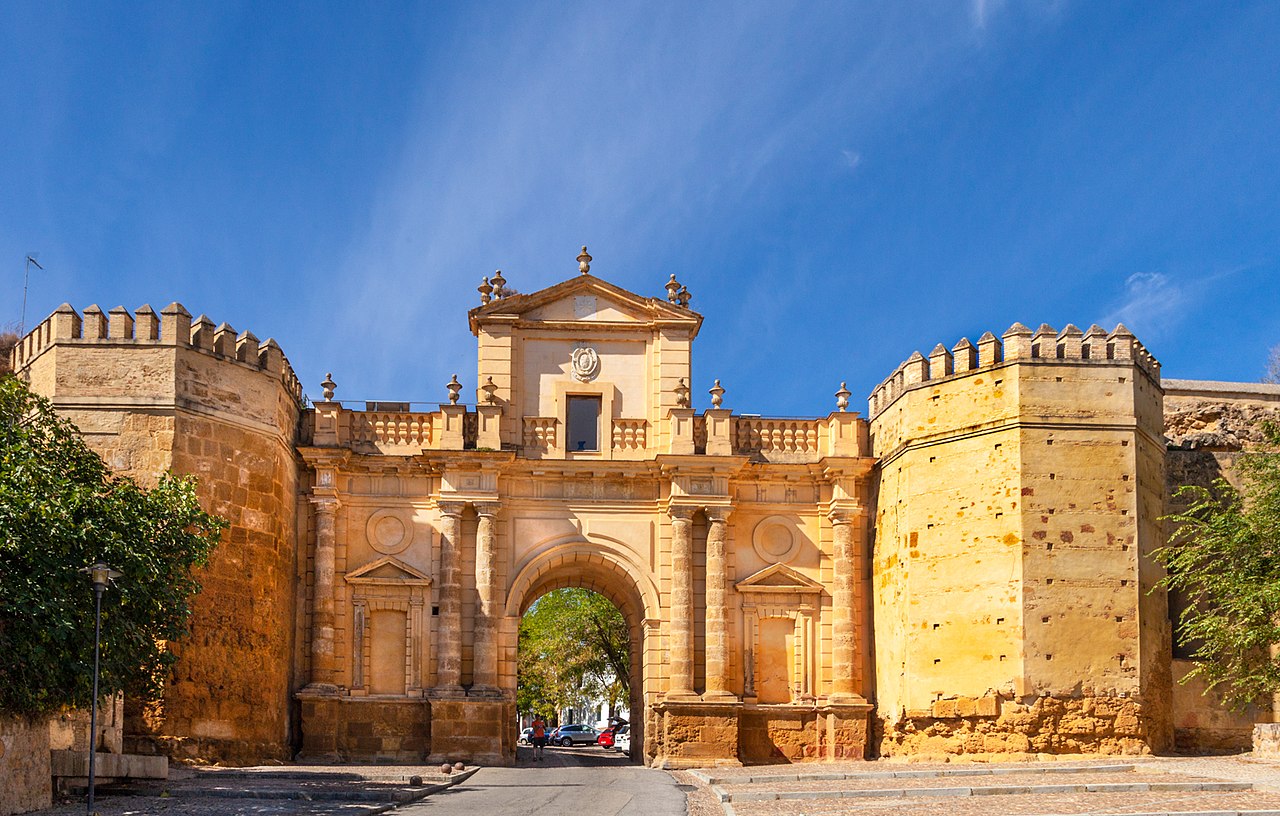
The spectacular Puerta de Córdoba, in Carmona
With almost thirty thousand inhabitants and located in the center of the province, about thirty-five kilometers from the capital, Carmona is a monumental wonder that stands out among all the pretty towns in Seville. So much so that a large part of the constructions of this ancient fortified city are registered in the Andalusian Historical Heritage.
It is the case of the imposing Alcazar of King Don Pedro, which dominates it from its highest point and is a tourist hostel. It was built in the fourteenth century by Pedro I of Castile on an old Muslim fortress. Therefore, it has important Mudejar elements. extends to the call Lower Alcazar, which has places as spectacular as the Gate of Seville, rest of its old wall, the homage tower and another higher quadrangular one. No less spectacular is the Cordoba gate, to which later reforms added classicist and baroque elements.
But, as we were saying, the Alcázar is just one of the many monuments that Carmona has. Among the religious, they also highlight the St. Peter's Church, with its Mudejar features; the Priory of Santa Maria, which combines Renaissance and Baroque styles; that of San Bartolomé, with a beautiful altarpiece, and the hermitages of San Mateo and San Antón.
On the other hand, you have to see in Carmona the many stately palaces that has. Among them, the Lasso house, from the end of the XNUMXth century; that of the Aguilars, with its impressive façade; that of the Domínguez, which has a wonderful geometric decoration on its façade; that of the Rueda, which is one of the largest, or that of the Briones, surrounded by a battlemented wall.
In short, it would be impossible for us to tell you about all the monuments that Carmona offers you. For this reason, we will limit ourselves to mentioning others such as the convents of La Concepción and Las Descalzas, Mercy Hospital, Cherry Theater or Roman era remains. Among them, the bridge over the Via Augusta and the amphitheater.
Santiponce
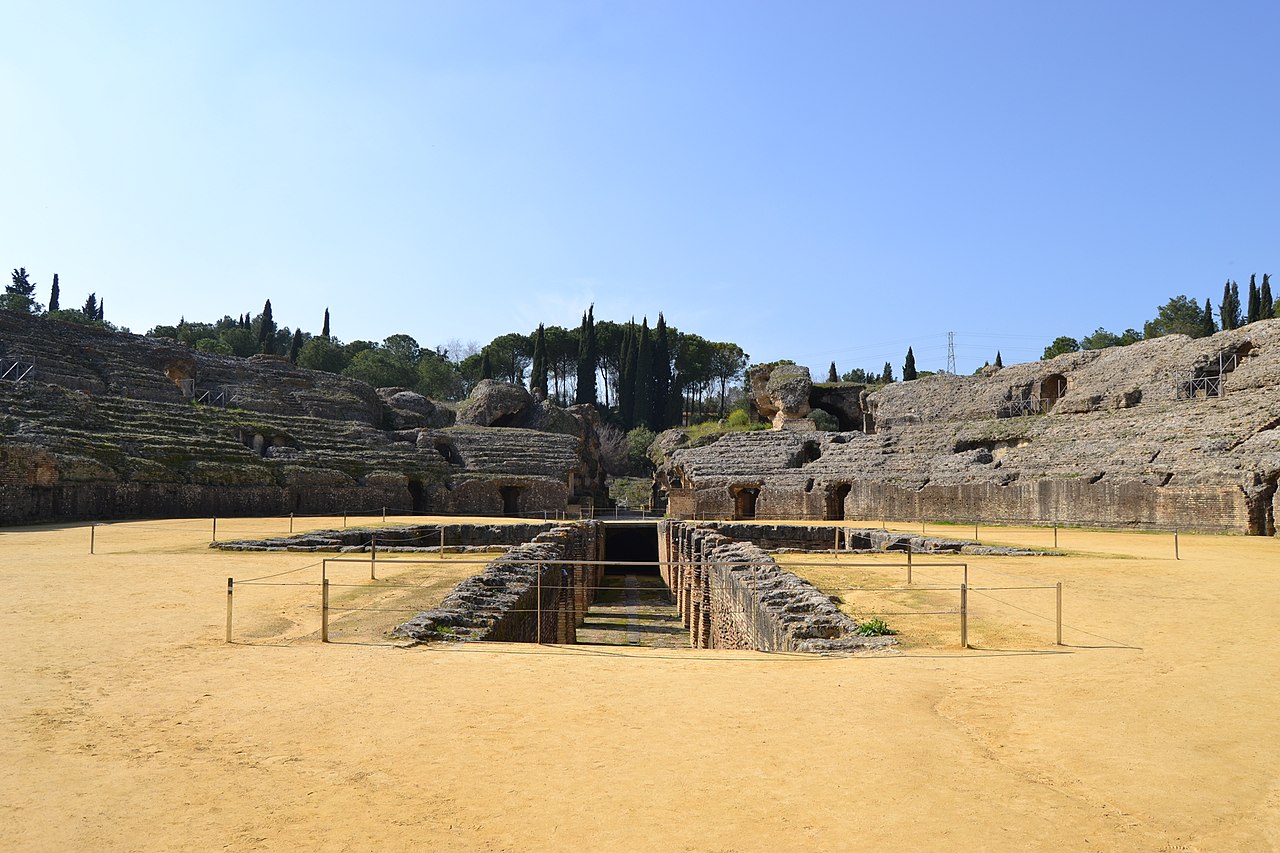
Amphitheater of the Roman city of Italica, in Santiponce
But, if we are talking about Roman remains, Santiponce takes the cake. Because in it is the ancient city of Italica, founded by the General Scipio Africanus in the second century before Christ when he returned from war against the Carthaginians. In this impressive monumental complex, the floor mosaics of the old houses stand out, but above all the remains of the ancient amphitheater, different temples such as the one dedicated to Trajan (locally born emperor) and houses like those of Neptune, Birds and Hilas.
But Itálica is not the only wonder of Santiponce. This small town of barely nine thousand inhabitants is located to the east of the province of Seville, seven kilometers from the capital. And we also recommend that you visit the Monastery of San Isidoro del Campo, built at the beginning of the XNUMXth century by Guzmán el Bueno and declared a Historic-Artistic Complex already in the XIX.
It basically responds to the Gothic and Mudejar styles, although it also has a later Baroque tower. As for its treasures, it houses an impressive altarpiece by the Renaissance sculptor Juan Martínez Montañés, a Christ of Pedro Roldan and fresco paintings attributed to Diego Lopez.
Finally, you must visit in Santiponce the Municipal Museum Fernando Marmolejo. It is located next to the Roman theater and houses pieces from the great goldsmith that gives it its name. Among these, some as spectacular as the reproductions of the crown of recession, the Tartessian candlestick from Lebrija or the Almohad keys of Seville.
Osuna
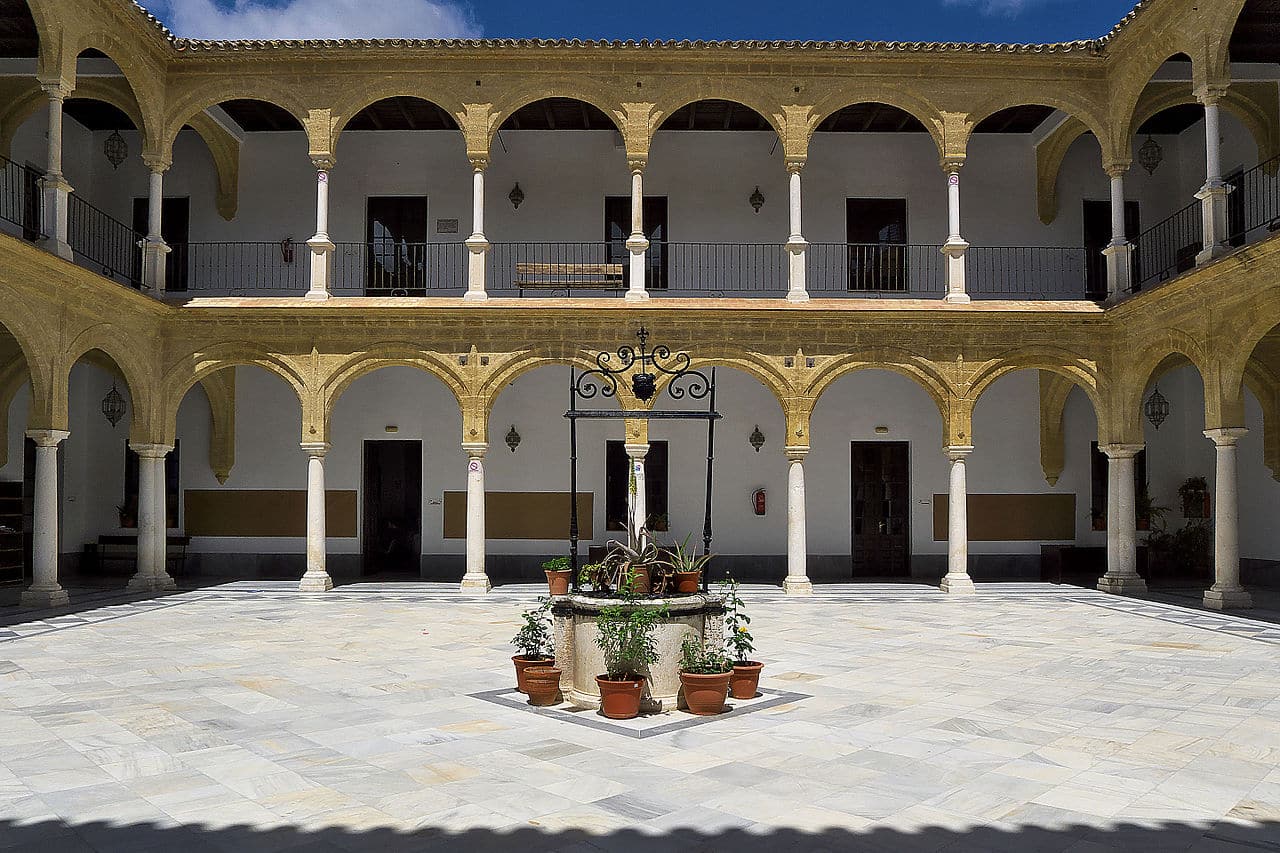
Cloister of the University of Osuna
We now come to the beautiful Osuna, where the white tones of its houses contrast with the ocher of many of its monuments. It is located in the southwest of the province, about eighty-seven kilometers from the capital. In its surroundings, you can see several farmhouses, typical rural constructions of Andalusia.
But, in the urban center of Osuna you have places of great interest. Among the religious stands out the Collegiate Church of Our Lady of the Assumption, built in the XNUMXth century and therefore one of the main examples of Renaissance architecture. As if that were not enough, it houses works of Jose de Ribera, of the already mentioned Martinez Montanes and Louis de Morales. To the same period belongs the Convent of the Incarnation, whose church has an impressive baroque and neoclassical altarpiece. To the first of these styles responds the Church of San Carlos el Real, which houses an important collection of paintings.
As for the civil heritage of Osuna, its great symbol is the University, in which its wonderful cloister with marble columns of the Tuscan order, and its four slender towers crowned by glazed ceramic roofs stand out. But we also advise you to see the Palace of the Marquis of La Gomera, built in the XNUMXth century and houses like those of the Torres, with its white facade, or of the Rossos, with his noble coat of arms. Likewise, in the XNUMXth century the old Cilla of the Cathedral Chapter and Arch of the Shepherdess.
But, perhaps, it sounds more to you when you see it bullring, because it served as a film set for the series Game of Thrones. And yet another surprise awaits you in Osuna. On the outskirts you have remains of ancient UrsoKnown as "the Petra of Andalusia" for its large stone reliefs. In addition, in its impressive interior room, all kinds of events are held.
Estepa, final stop on our tour of the beautiful villages of Seville
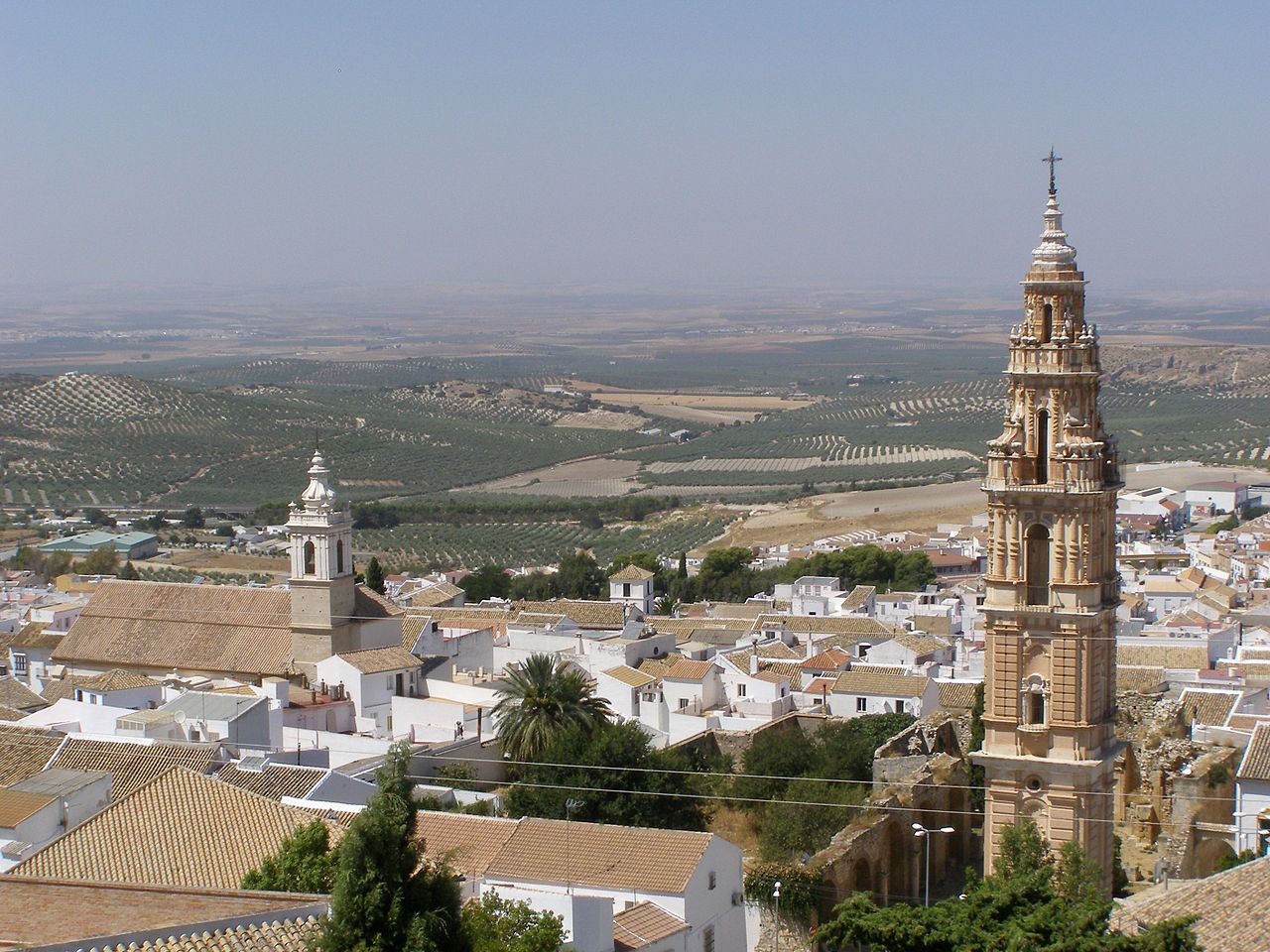
View of Estepa with the Victory Tower in the foreground
We end our trip through the beautiful towns of Seville in this small town of about twelve thousand inhabitants located in the southeast of the province. Despite this, holds the title of city, which was granted by the Regent Maria Cristina of Habsburg in 1886. Likewise, it was declared Historic Artistic Set in 1965.
On the other hand, it is located six hundred meters above sea level, which allows it to offer you wonderful views of the Sevillian countryside. Especially recommended in this regard are the Los Tajillos viewpoint and the call Andalusian balcony, from which it is seen even the city of Sevilla.
As for its monuments, the great symbol of Estepa is the old fortress, a Muslim fortification dating back to the XNUMXth century. Later, the homage tower was added. But another construction of this type is also an emblem of the town. We talk about the victory tower, which belonged to the old convent of the same name and is forty meters high. Also, you should see the palace house of the Marquis of Cerverales, baroque style.
Regarding the religious monuments of Estepa, the church of Santa María la Mayor, built between the XNUMXth and XNUMXth centuries, although its historicist-style tower is from the XNUMXth century. For its part, the church of Our Lady of the Assumption it's gothic and those of Our Lady of Remedies and Carmen, baroque. The religious heritage of the town is completed by the church of san sebastian, convents of Santa Clara and San Francisco and hermitage of Santa Ana.
In conclusion, we have proposed some of the beautiful villages of Seville by excellence. However, there are many other locations that are also of great interest. It is the case of Écija, known as "the City of Towers" for the many it has; of Marchena, with its church of San Juan Bautista and its octagonal tower of the Puerta de Carmona, or Sanlucar la Mayor, whose old town is listed as a Site of Cultural Interest. Get to know these beautiful Andalusian towns. You will not regret.